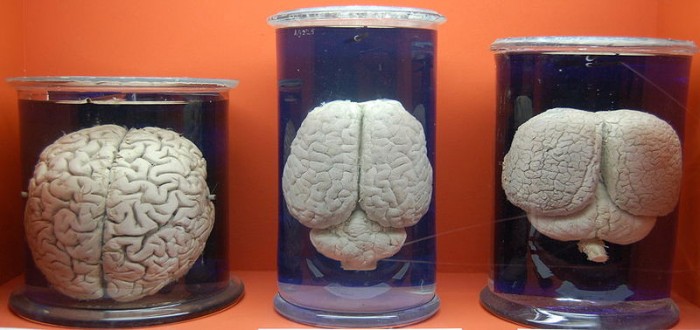
Photo credit: Escaladix
Brains, beautiful brains. The Encyclopedia of Marine Mammals has quite a bit to say about marine mammal brains, including a few fun facts. Did you know that a killer whale brain weighs five times as much as a human brain? And that baleen whales have the largest brains in the animal kingdom? Pretty interesting.
And did you know that, “No other brain surpasses the cetacean brain in richness and complexity of neocortex gyrification.” What’s that, you’ve never heard of neocortex gyrification? Me neither. But apparently this combination of terms refers to the squiggly patterns and folds you see when looking at the top layer of the brain. And if you take a moment to to look at the photo you can tell that the common dolphin brain on the far right has many more squiggles and folds than the human brain on the far left.
During the last 50 million years, marine mammal brains have evolved and adapted to life in the ocean, making meaningful comparisons with land mammals a bit challenging. But let’s face it, marine mammals are smart and some species are smarter than others.
Recent research by Emory University neuroscientist Lori Marino indicates that dolphins are particularly smart. “‘Dolphins are sophisticated, self-aware, highly intelligent beings with individual personalities, autonomy and an inner life. They are vulnerable to tremendous suffering and psychological trauma,’ Marino says,” in a ScienceDaily article. Marino urges people to reconsider dolphin captivity because their ‘brain complexity and intelligence suggests that these practices are potentially psychologically harmful to dolphins.’
I agree. This is something we need to reconsider, especially after the tragic accident last week with Tilikum the killer whale (killer whales are dolphins) that killed his trainer Dawn Brancheau. We’ll never know and fully understand why this terrible incident happened, but it begs the question. Do these highly sophisticated animals belong in captivity doing circus tricks for our amusement? I don’t think so.
Leave a Reply